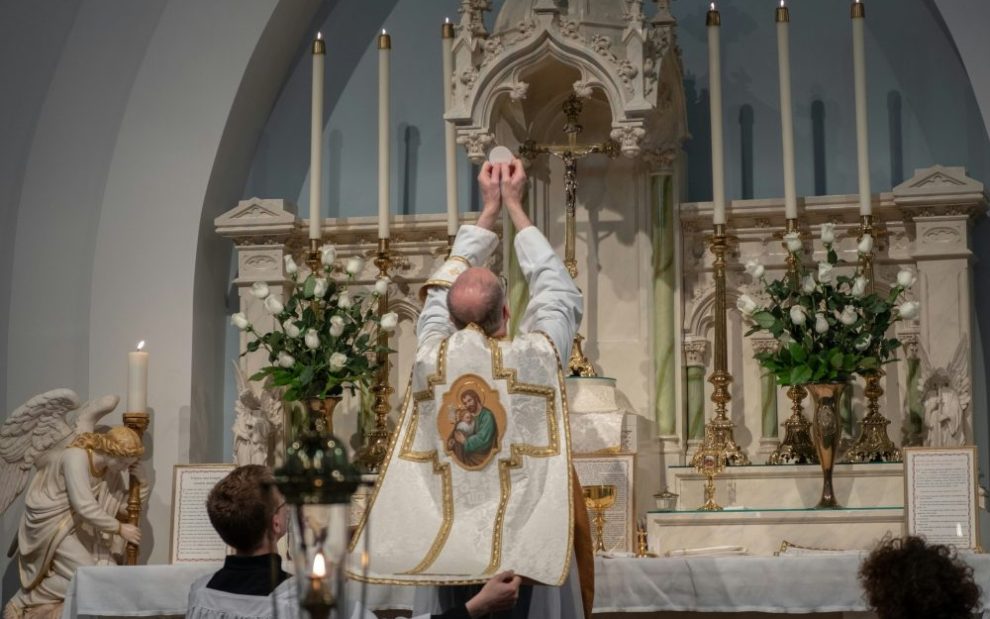The Tridentine Mass, often referred to as the “Latin Mass” (though this is a misnomer, as there is usually some vernacular involved, especially in the form of hymn singing), was celebrated from 1570 until the revised Roman Missal in 1970 after the Second Vatican Council. The Tridentine liturgy was the Roman rite for 400 years; however, this is only a fraction of the time since the foundation of the church. The Vatican II revisions continue a tradition of development that has existed since the early church.
In 1963, Pope Paul VI called for liturgical reform in Sacrosanctum Concilium (On the Sacred Liturgy). He believed that reforming the liturgy would breathe life into the faithful and strengthen unity within the church.
However, a small number of Catholics lamented this reform, preferring the previous rite. In a 2007 effort to cultivate inclusion within the church, Pope Benedict XVI issued Summorum Pontificum, an apostolic letter allowing the use, under certain conditions, of the pre-Vatican II Mass. Benedict XVI was clear that this should not lead to division and that the Roman Missal of Pope Paul VI remains the ordinary expression of prayer.
But there was division. Some vocal Catholics began to perpetuate the idea that the Tridentine Mass is somehow a better or truer expression of faith. These “liturgy wars,” as they are often called, have caused dissension and disruption. In response to growing unrest and lack of charity among some of the faithful, Pope Francis followed Benedict XVI’s apostolic letter with Traditionis Custodes (On the Use of the Roman Liturgy Prior to the Reform of 1970) in 2021.
Both Sacrosanctum Concilium and Summorum Pontificum emphasized the unity of the faithful, and Traditionis Custodes is in line with this tradition. Pope Francis also clearly states that one cannot “deny the validity and the legitimacy of the liturgical reform dictated by Vatican II.”
To confront growing disunity, Pope Francis reminded bishops of their role as “guardians of tradition” and charged them with regulating the pre-Vatican II rites in their diocese.
So, what does this mean for Catholics who’d like to celebrate the Tridentine Mass, often called the old Latin Mass, in their parishes? At present, celebrating the old Latin Mass in a parish where it is not already celebrated is not an option: Bishops must authorize it. And when the bishop does grant permission, it’s not supposed to be in parish churches. The faithful are also not supposed to create new “personal parishes” for the celebration of the Latin Mass. Groups of people—even priests—cannot simply decide to celebrate the old Latin Mass, even if it is their personal preference. They can, however, petition their bishop, who will find a suitable place within the diocese, such as a monastery or a non-parish church, where the older rite can be celebrated.
This article also appears in the April 2024 issue of U.S. Catholic (Vol. 89, No. 4, page 49). Click here to subscribe to the magazine.
Image: Unsplash/Shalone Cason













Add comment